
The University of Buenos Aires is a public research university in Buenos Aires, Argentina. Established in 1821, it is the premier institution of higher learning in the country and one of the most prestigious universities of Ibero-America. It has educated 17 Argentine presidents, produced four of the country's five Nobel Prize laureates, and is responsible for approximately 40% of the country's research output. The QS World University Rankings currently ranks UBA at number 7 in the Spanish-speaking world.

The Escuela Superior de Comercio Carlos Pellegrini is a public high school in Buenos Aires, and it is one of the most prestigious in Argentina and Latin America.
The 1979 edition of the Copa América association football tournament was played between 18 July and 12 December. It was not held in a particular country, all matches were played on a home and away basis. Defending champions Peru were given a bye into the semi-finals.

Colegio Pestalozzi is a German international school in Belgrano, Buenos Aires. It is governed by the Asociación Cultural Pestalozzi. It serves kindergarten through secondary school: Colegio Pestalozzi offers elementary and secondary education as well as an "initial level" for children from two to five years.

Argentinisches Tageblatt was a German-language weekly newspaper published every Friday in Buenos Aires, Argentina. It was last published on January 13, 2023.

The following is an alphabetical list of topics related to the Argentina.

The Mariano Moreno National Library is the largest library in Argentina. It is located in the barrio of Recoleta in Buenos Aires. The library is named after Mariano Moreno, one of the ideologists of the May Revolution and its first director.
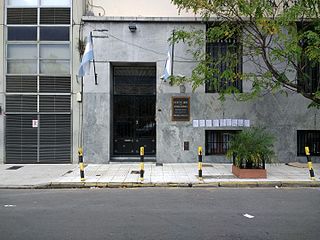
The Instituto Libre de Segunda Enseñanza is a high school that depends on the Universidad de Buenos Aires (UBA). It has approximately 1000 students, and it is located in Libertad 555 street, Capital Federal, Buenos Aires, Argentina. As it is affiliated with the University, it has an admission process that lasts one year and consists of an admission course, which involves multiple exams in Mathematics, History, Language and Geography. Almost all of its faculty teaches in the UBA, and physical education used to be performed at the Universidad de Buenos Aires campus, in Ciudad Universitaria, until 2016. One of its characteristics is that there is no need to do the CBC, because it offers its students the possibility of attending an extra 6th year in the career they have chosen.
Ernesto Alemann (1893–1982) was the son of Swiss immigrants to Argentina. For several decades he was the editor-in-chief and publisher of the family newspaper Argentinisches Tageblatt, printed in German, in Buenos Aires. Ernesto Alemann played an important role in the opposition to Nazi Germany in the 1930s in Argentina, and was greatly respected in the German colony of Argentina for the role he took in opposing Hitler, in particular in the editorials and articles of the Argentinisches Tageblatt. In order to have an alternative to the Nazified Goethe School in Buenos Aires, Ernesto Alemann founded the Pestalozzi school called Colegio Pestalozzi in Buenos Aires in 1934.
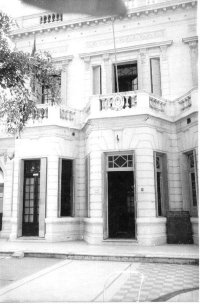
The Colegio Nacional de San Isidro (CNSI) is a public high school located in San Isidro, Buenos Aires, Argentina.
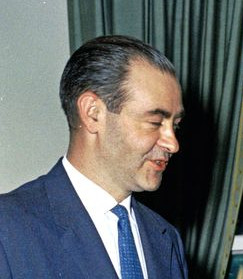
Roberto Alemann was an Argentine lawyer, economist, publisher, and academic.
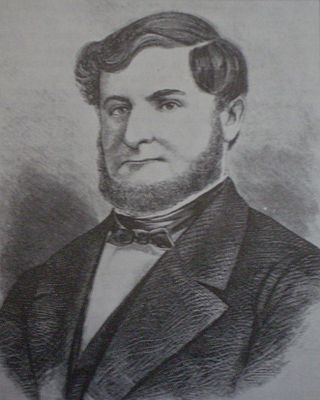
Pastor Obligado was an Argentine lawyer and lawmaker who served as Governor of the secessionist State of Buenos Aires from 1853 to 1858.
Events from the year 1940 in Argentina

Colegio Cardenal Newman or Cardinal Newman College is Catholic, bilingual, day, primary and secondary school for boys in San Isidro, Buenos Aires Province, Argentina, in Greater Buenos Aires.

Axel Kicillof is an Argentine Peronist economist and politician who has been Governor of Buenos Aires Province since 2019.

Gloria Guzmán (1902–1979) was a Spanish-born Argentine vedette and actress who performed in the early Argentine theater.
Instituto Americano de Ecatepec De Morelos is a Mexican educational establishment, Founded by Ruben Manriquez Pliego.
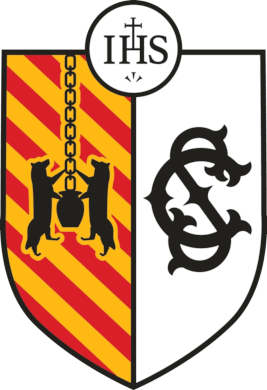
Colegio del Salvador is a private Catholic pre-school, primary, and secondary school for boys located in Buenos Aires, Argentina. The school was founded by the Society of Jesus in 1868.

The Colegio del Uruguay is an Argentinian educational institution, created by then Governor of Entre Ríos Justo José de Urquiza in the 28th of July of 1849. It was the first in the country to be secular and free. Nowadays, it serves circa 1200 students.



















